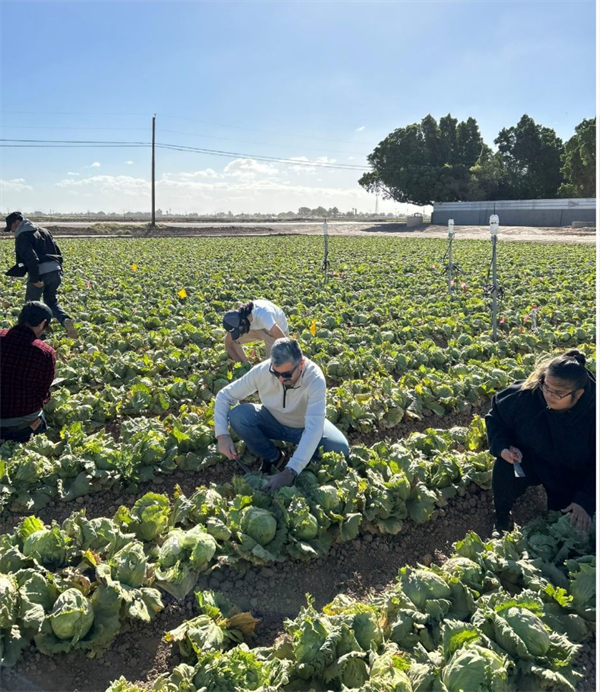In regions like Yuma, AZ, extensive farming practices, irrigation and nitrogen (N) fertilizer management should be considered simultaneously due to the important fact that N moves in the soil with water and both variables should be managed together to enhance production efficiency. Coupled irrigation and N management strategies with the efficient irrigation method can lead to a critical approach to increase irrigation and nitrogen use efficiency (NUE) while maintaining crop yield and soil productivity and minimizing the potential for N leaching or losing. The mass of leached N during the growing season may be reduced by improved irrigation efficiency that can reduce drainage volume. For example, the surface/furrow irrigation system has greater irrigation depths and lower NUE than sprinkler irrigation systems. Moreover, the methodology of N application through split/timing applications can increase the NUE, especially when utilizing micro-irrigation and sprinkler irrigation systems. One of the primary objectives of the irrigation systems is to maximize the water storage in the root zone through uniform irrigation application and distribution and in the meantime to minimize water losses through deep percolation and surface run-off. In addition, irrigation systems have been utilized to apply fertilizers (fertigation) throughout the season. Generally, these systems provide a way to supply adequate N (allows small dosage application) to the crop in-season and those systems can deliver the desired nutrition amount to the crop at any crop stage with a high efficiency and distribution uniformity. In other words, a given irrigation system has the potential to reduce the fertilizer inputs and the production costs, reduce foliar disease, and minimize leaf wetness as well as reduce the weeds.
The three most commonly used irrigation methods/systems are (i) surface (gravity), (ii) sprinkler (including center pivot), and (iii) micro-irrigation. For each of the methods, there a different management processes and the uniformity of water applications as well as infiltration dynamics, which influence the efficiency of the system as well as the efficiency of N applications. Worldwide, low NUE is one of the most important challenges for researchers, farmers, and agencies, and it is on average quite low in both organic and conventional agricultural systems, including in developed nations. It is reported that globally, pre-plant N is most commonly applied, which may lead to poor synchrony between N and crop demand, contributing to low NUE. Applying N at a uniform rate is another factor of low NUE, because the available N level for crop uptake may vary between the fields and within a given field due to the spatial variability in soil characteristics and temporal characteristics due to environmental factors.
Timing nitrogen applications for lettuce is key to maximizing nutrient management efficiency, though it can be challenging if growers are constrained by time. To minimize nutrient loss, it's best to avoid pre-plant nitrogen applications, especially in the fall. At planting, apply a starter fertilizer, positioning it below and to the side of the seed row. The first sidedress application should occur after thinning at the 2-4 leaf stage, but only if soil nitrate-nitrogen is below the critical level. A second application is recommended a few weeks later at the cupping stage, contingent on soil nitrate levels. These applications should be carefully timed and adapted based on soil conditions to ensure effectiveness. Aligning nitrogen applications with the crop’s demand not only enhances nitrogen use efficiency but also helps in managing tight schedules, reduces environmental impacts, and optimizes lettuce yield and quality (Figure 1).

Figure 1: Harvesting in the Organic/Conventional Lettuce Production Field at the Valley
Research Center, University of Arizona Yuma Agricultural Center, Yuma, Arizona.






